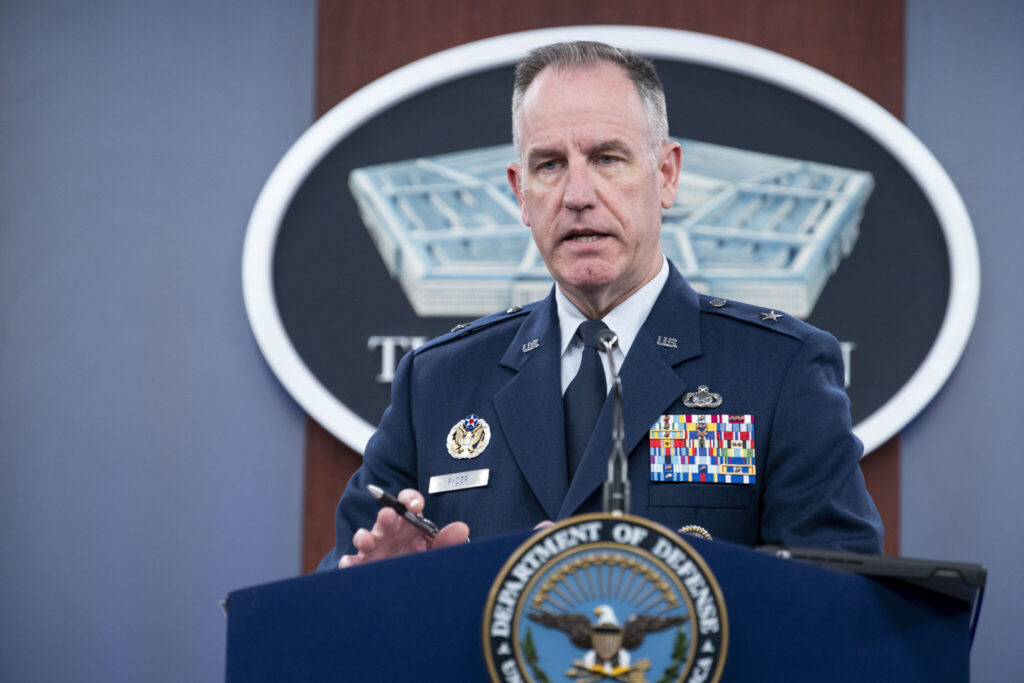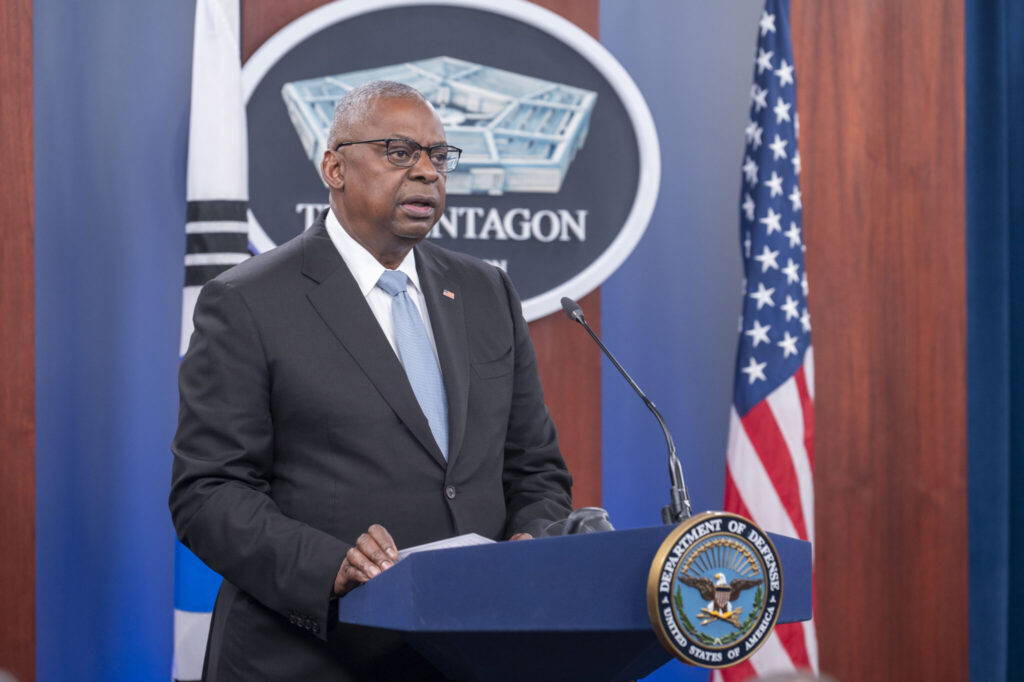U.S. Middle East military/ Pentagon bomber deployment/ B-52 Middle East/ U.S. aircraft carrier Middle East/ Lloyd Austin defense update/ Newslooks/ WASHINGTON/ J. Mansour/ Morning Edition/ The Pentagon has ordered additional bombers, fighter jets, and Navy warships to the Middle East, strengthening U.S. defense capabilities in response to escalating tensions in the region. These deployments are set to support U.S. allies and deter threats from Iran and regional adversaries.

Pentagon Boosts Middle East Military Presence: Quick Looks
- Deployment Orders: B-52 bombers, fighter jets, tanker aircraft, and Navy destroyers deployed to Middle East.
- Strategic Shift: USS Abraham Lincoln carrier to depart soon, with other assets to cover the region.
- Objective: Reinforce defenses amid Israel-Hamas and Israel-Hezbollah conflicts and potential Iranian threats.
- Key Statement: Pentagon emphasizes capability to “deploy worldwide” to address evolving threats.
- Background Context: U.S. pressing for regional stability while defending personnel against Houthi and other threats.
Pentagon Deploys Bombers, Fighter Jets to Middle East Amid Rising Tensions
Deep Look
The U.S. Department of Defense is ramping up its military presence in the Middle East, deploying B-52 bombers, additional fighter jets, tanker aircraft, and Navy destroyers to reinforce the region amid escalating conflicts. This move comes as Defense Secretary Lloyd Austin ordered the USS Abraham Lincoln carrier strike group to return home, prompting Pentagon efforts to fill the temporary gap in aircraft carrier coverage. Maj. Gen. Pat Ryder, the Pentagon’s press secretary, stated that these new deployments aim to counter security threats, particularly those posed by Iran and its allies.
This decision to enhance U.S. assets in the Middle East aligns with ongoing conflicts, including Israel’s confrontations with Hamas in Gaza and Hezbollah in Lebanon, as well as recent Israeli airstrikes on Iranian bases. While Austin has repeatedly advocated for ceasefires, the U.S. has also maintained that it will support Israel and protect American forces in the area. The Pentagon has emphasized that any attacks against U.S. personnel or allies by Iran or its affiliates would be met with a strong response.
The addition of B-52 Stratofortress bombers—nuclear-capable, long-range aircraft often deployed as a deterrent to Iran—marks the second major bomber reinforcement to the region this month, following October’s B-2 stealth bomber strikes on Houthi targets in Yemen. The Pentagon has withheld details on the exact number of aircraft and ships to be added, but the deployment is expected to increase U.S. operational capabilities, even as the personnel count may slightly decrease with the USS Abraham Lincoln’s departure.
Upon the Lincoln’s exit, U.S. forces will have to operate without an aircraft carrier in the Middle East until reinforcements arrive, presenting a temporary gap. To mitigate this, the Pentagon has ordered the deployment of Navy destroyers equipped with ballistic missile defense systems, likely sourced from the Indo-Pacific or European theaters, according to U.S. officials. These destroyers are expected to enhance regional security by intercepting ballistic missiles and providing additional support to U.S. and allied assets in the Middle East.
Austin’s order also sends a clear signal of U.S. commitment to rapid global deployment, underscoring the ability to address urgent threats with force. Ryder emphasized that Austin remains focused on the protection of U.S. personnel, pledging necessary actions to safeguard American interests against any Iranian aggression or its proxies in the Middle East.
Meanwhile, U.S. military officials expect the USS Harry S. Truman, currently in the North Sea for NATO exercises, to move to the Mediterranean in the coming weeks. Although it will not arrive before the USS Abraham Lincoln departs, the Truman will eventually support the Middle East mission from a nearby strategic location.
At present, the Lincoln’s strike group remains active in the Gulf of Oman, with some of its destroyers positioned in the Red Sea and Mediterranean Sea. Additionally, the Marine Amphibious Ready Group and two destroyers are stationed in the Mediterranean, further bolstering U.S. assets as the region faces heightened military activity.
The Pentagon’s recent actions highlight a careful balancing act as it seeks to maintain regional stability amid rising tensions, even as it presses for diplomatic solutions. By increasing military presence, the U.S. signals its readiness to address any immediate threats while awaiting the return of carrier support in the region.







